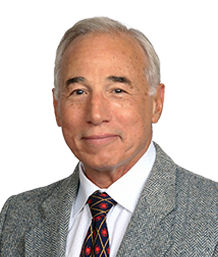If You’re on a GLP-1, These Exercises Are for You

If you’re taking a GLP-1 to manage your weight or type 2 diabetes, you’ve probably experienced some weight loss. Congratulations!
In a study published in September, researchers found that patients lost 5.1 percent of their weight on semaglutide (Ozympic) and 2.2 percent on liraglutide (Saxenda), on average. While those numbers are modest (5.5 percent is 11 pounds for someone who weighs 200 pounds), some in the study lost considerably more. For example, patients who were prescribed a higher dose of semaglutide for weight loss with no interruption in medication coverage lost 10 percent at one year.
When they work, these pricey drugs can help reduce the risk for diabetes (and help manage it), heart disease, stroke and kidney disease, among other conditions. But besides fat, patients also lose muscle mass, which can be an unwelcome side effect.
Why Muscle Mass Is Important
Muscle mass helps us burn calories by boosting our metabolism. It helps maintain our mobility, balance and strength. And it becomes more and more important as we age for maintaining our health.
Excessive loss of muscle during weight loss in older people is associated with increased risk of death, hip fracture and disability. This risk increases with age.
In studies of the effects of GLP-1, researchers estimate that 25 to 39 percent of the weight people lose on the drugs is muscle. While there is some controversy over these calculations, there’s no question that people who lose fat are also losing some muscle.
The concern has spawned a cottage industry of new exercise routines from gyms catering to people on GLP-1s, with names like the Ozempic Workout and the GLP-1 protocol. I’ll let you in on a little secret: If you’re taking a GLP-1 (and even if you’re not), you should be exercising, but you don’t need to go to a special gym or follow a special workout.
Maintaining muscle mass when you’re losing weight is about getting enough aerobic and resistance exercise every week, studies of people who have undergone bariatric weight-loss surgery have shown. Both types of exercise are important. Fortunately, the sophisticated InBody scale that most MDVIP practices have can help monitor your weight and your body composition, specifically revealing how many of those pounds lost may have come from decreased muscle mass.
How You Should Be Exercising
If you’re on a GLP-1 for blood glucose control (diabetes) or weight loss, exercise should be part of your plan. For people with type 2 diabetes, exercise makes our bodies less insulin resistant and forces our bodies to use glucose. If you’re trying to lose weight, exercise compliments GLP-1s by helping us burn calories, reduce fat mass and preserve lean muscle mass, which helps us burn more calories. In this way, exercise can make GLP-1 drugs more effective.
Resistance Training
Let’s start by talking about resistance training, which is great for building and maintaining your muscle mass. Resistance training, also called strength training and usually associated with lifting weights, helps us:
- Stay agile and reduce the risk of falls as we age.
- Burn calories even when we’re at rest by increasing resting metabolic rate.
- Reduce fat, especially in the abdomen.
- Keep our heart healthy.
- Manage our blood sugar.
- And boost our moods.
Generally, guidelines call for two sessions a week of resistance training to maintain our health. This can be lifting weights like dumbbells, barbells and kettlebells or using a weight-lifting machine.
You can also use your own weight by doing pushups, sit ups, pullups, squats, lunges. If you’re a member of a gym, a trainer can show you these and there are tons of exercise examples on the internet. Another easy-to-use source for muscle-building exercise instruction is the “Fitness” section in your MDVIP Connect portal.
Resistance bands also work well. You can do all sorts of exercises with a band and a door, including standing rows, chest presses, flies, extensions and much more. Yoga and Pilates are also considered great examples of resistance training.
Cardio Exercise
Like resistance training, cardio/aerobic exercise also helps with weight loss and with insulin resistance. Just eight weeks of aerobic exercise can help improve insulin sensitivity, according to a recent study. You also need to get your heart pumping, because the number one complication of obesity and type 2 diabetes is heart disease.
You should be shooting for between 150 to 300 minutes of moderate activities like fast walking or riding a bike on a flat surface at a modest pace. Or do 75 to 150 minutes of vigorous activity like jogging, cycling at a fast pace or playing basketball.
If you aren’t exercising already, you should talk to your doctor about the amount and types of exercise you should be doing.
Of course, these are things all of us should be doing, whether we’re on a GLP-1, trying to lose weight without medications or just trying to live our healthiest lives.
